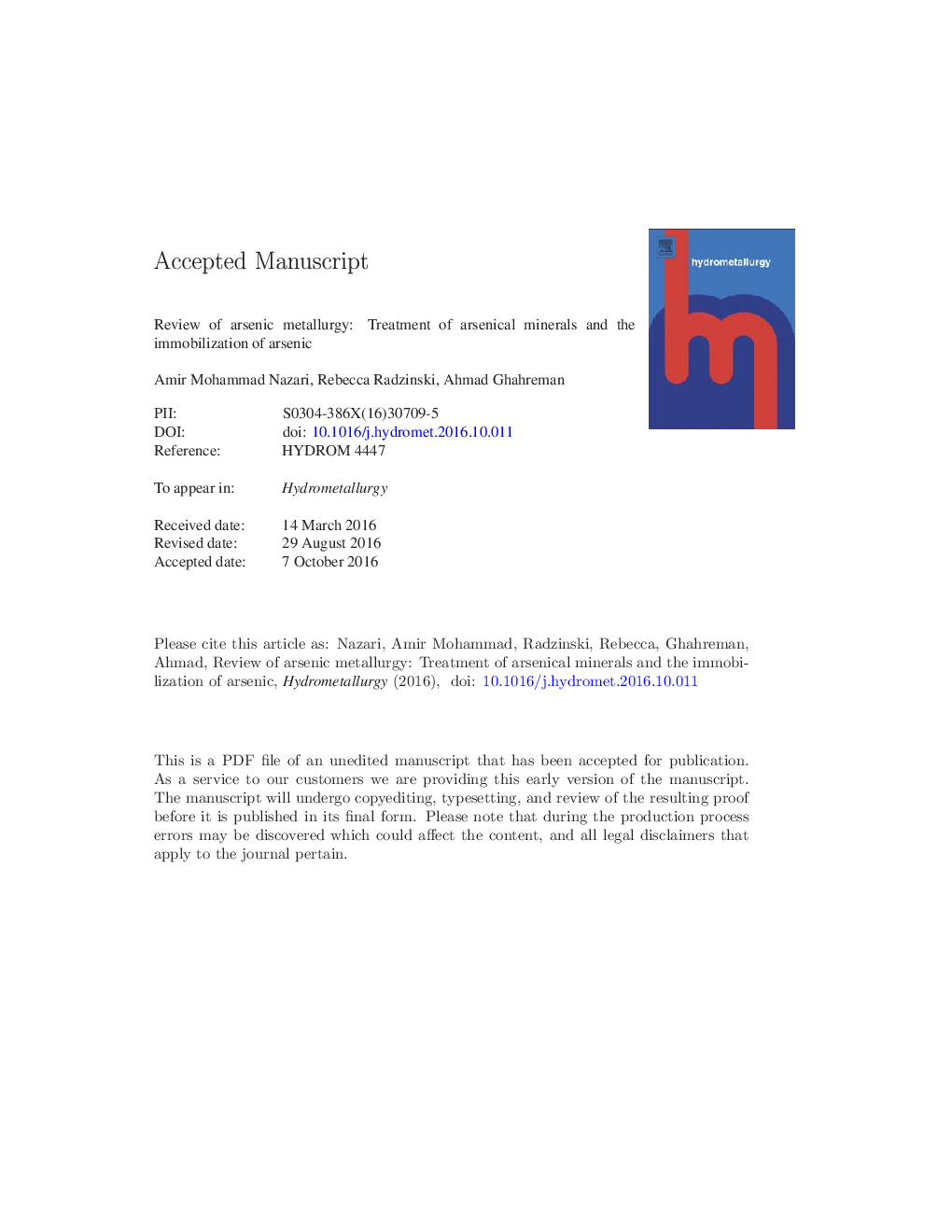| Article ID | Journal | Published Year | Pages | File Type |
|---|---|---|---|---|
| 6659154 | Hydrometallurgy | 2017 | 105 Pages |
Abstract
The attention of mining industry has directed towards the processing of complex arsenic-bearing minerals due to a decrease in the traditional base metal reserves. Arsenic present in the minerals is usually mobilized through hydrometallurgical and pyrometallurgical processes. Arsenic has become a worldwide environmental challenge in the metals and mining industry. Hence, arsenic in the process streams must be immobilized properly prior to the discard of waste. The initial step for arsenic fixation is the oxidation of trivalent arsenic in order to improve both arsenic removal and stability of the final arsenical residues. Arsenic immobilization step could be accomplished using hydrometallurgical and pyrometallurgical techniques. Whereas, pentavalent arsenic is commonly precipitated using hydrometallurgical processes consisting of lime neutralization, sulfide precipitation, co-precipitation of arsenic with ferric ions and scorodite precipitation. In the pyrometallurgical methods arsenic and sulfur are captured using a fixing agent such as calcium and ferrous salts to produce a stable residue. This paper aims to provide a comprehensive review on past, current and future arsenic immobilization techniques related to the mining industry with a large focus on the practised processes and new developments.
Keywords
Related Topics
Physical Sciences and Engineering
Chemical Engineering
Chemical Engineering (General)
Authors
Amir Mohammad Nazari, Rebecca Radzinski, Ahmad Ghahreman,
